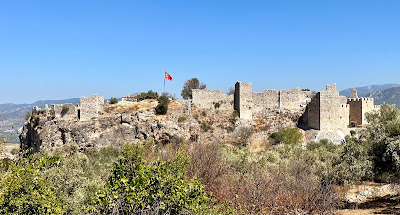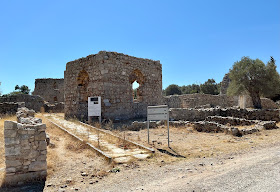This new Osprey by Basilio Di Martino and Pier Paolo Battistelli looks at the Axis air assault in the Balkans in the early stages of the Second World War. Christopher Shores's very detailed book on this subject, published by Grubb Street in 1987, is available, but there is certainly room for a more concise and readable book on the subject.
There were two, arguably three, air campaigns involved: the Italian invasion of Greece and the later German attack on Yugoslavia and Greece. The Axis air forces operated mainly at the tactical level to support ground operations, although the Italian medium bombers were ill-suited to these operations in challenging conditions.
The authors start by assessing the capabilities of the Axis air forces. The Regia Aeronautica fielded around 300 aircraft for the Greek campaign at the limit of the logistical support available from Albanian airfields. The Luftwaffe was better equipped with 500 aircraft, although the late addition of an attack on Yugoslavia required a rapid change of plan.
The defenders were considerably weaker. The Hellenic Air Force had around 150 operational aircraft, including obsolete types. Airfields were often poor, and spare parts were scarce for such a diverse range of aircraft. The Yugoslav Air Force was numerically strong and quite well equipped with some 460 frontline aircraft, 340 of which were operational in the fighter and bomber units. These were mostly modern types, although the same could not be said for ground support aircraft. The need to deploy in dispersed airstrips made communications challenging. The RAF had the aircraft to take on the Italians and Germans, but they were also limited to the available airfields in Greece.
The next chapter examines the campaign objectives. The Italians suffered from changing objectives as the land campaign faltered, and like all the air forces, they were hampered by bad weather. The Hellenic Air Force focused on air defence, while the RAF bombed the Albanian ports. The book then details the actual campaign, supported by excellent maps and complete orders of battle. There are several colour plates to keep the modellers happy, even if my efforts at painting Italian camouflage leave much to be desired. I have a soft spot for the Gladiator and the CR-42, even though building kits with all those struts is a nightmare. I was at the RAF Museum on Friday admiring their Gladiator.

In the later air battles over Athens, the few remaining Greek aircraft and the RAF fought valiantly against overwhelming odds. There is a fine colour plate of the available Hurricanes of both No.33 and No.80 Squadrons led by Squadron Leader Pattle, the South African air ace. However, many Hurricanes were destroyed on the ground due to the absence of early warning systems. After the RAF was neutralised, the Luftwaffe began an anti-shipping campaign. Overall figures show that 97 vessels definitely sunk from April 20 to 30, plus another 11 probable, totalling some 162,000 tons.
In the Greek campaign, the role played by the air forces on both sides was limited due to shortcomings in doctrine and tactics, poor logistics, and a lack of effective solutions to air-to-ground co-operation on the Italian side, and a shortage of equipment and, again, poor logistics on the Greek side. It was a long campaign of attrition, and attrition was playing in favour of the Italians, with the Hellenic Air Force becoming less and less relevant. The RAF had some impact in its attacks on Albanian harbours but was otherwise overrun by the German advance. The Germans considered the campaign a success, although they had supply problems and failed to prevent the evacuation of the Allied forces from Greece.
For the wargamer, while the air battles are certainly playable using Blood Red Skies or similar, most gamers will use air power to support land operations.
 |
| My 1/72nd scale Macchi C.200 Saetta |

















































